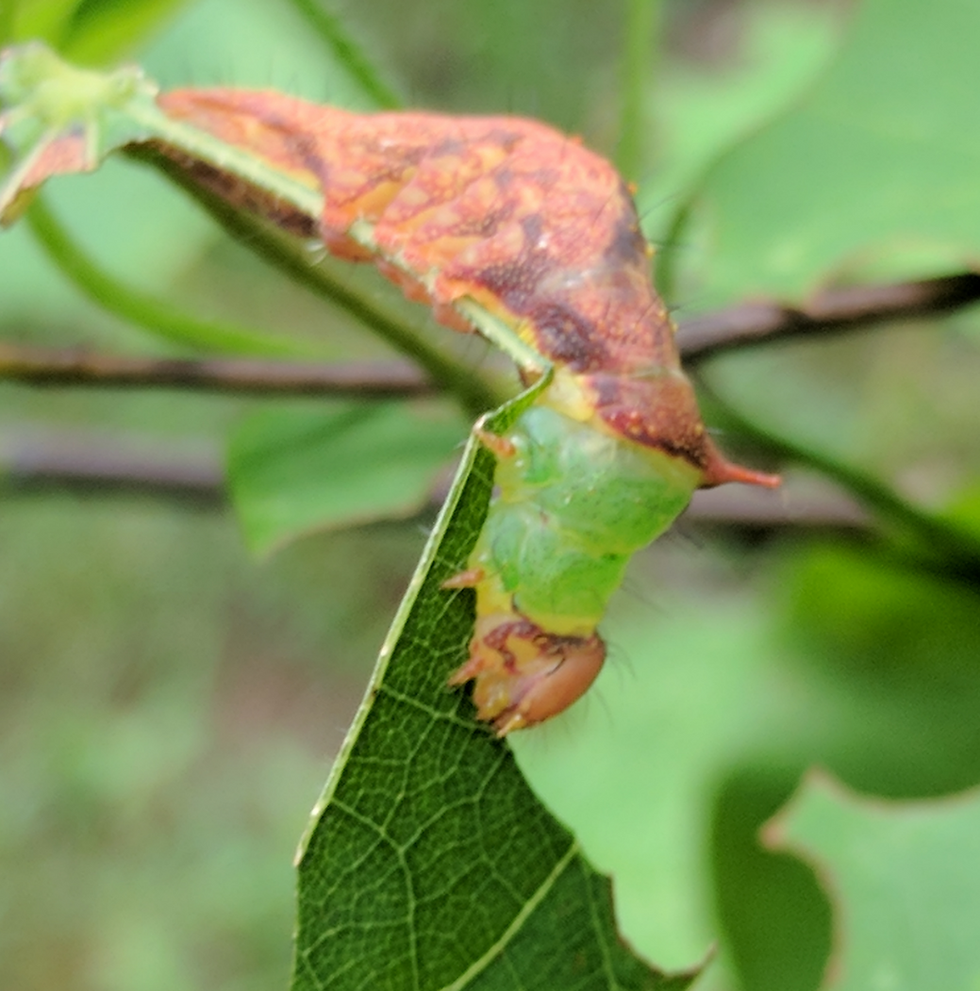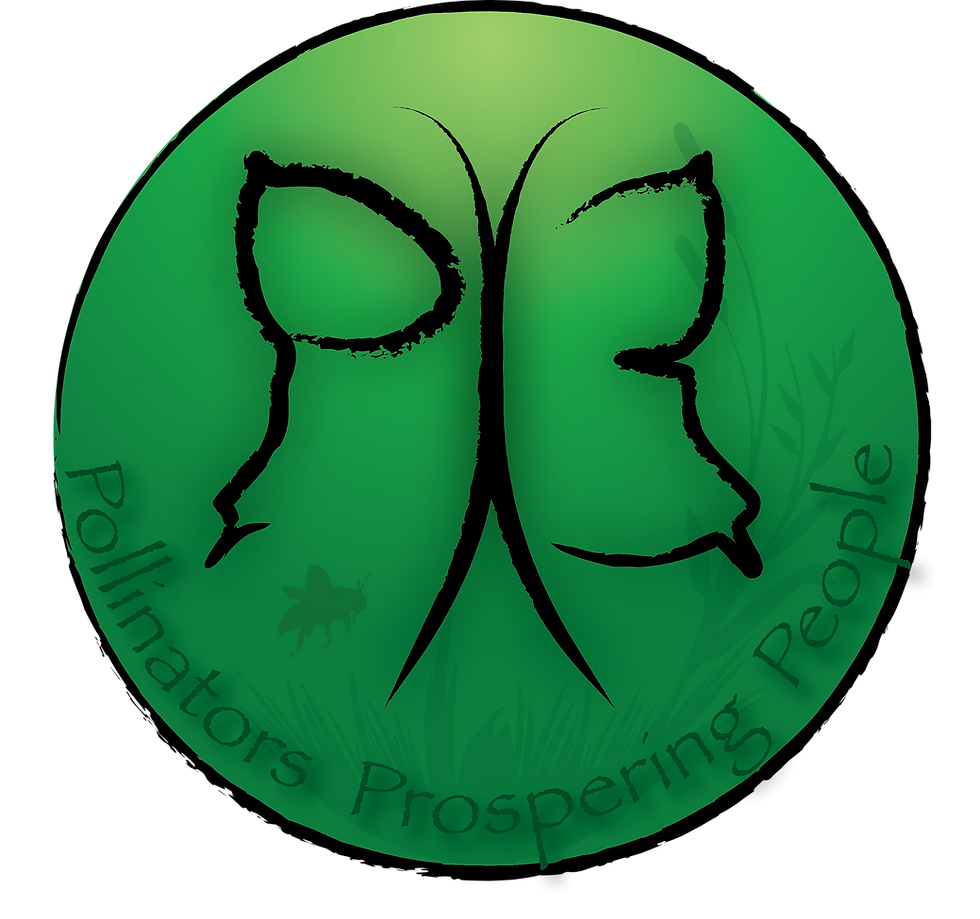Night Moths, the Unsung Pollinator Heroes By: J. Muro
- PX3 Team

- Jun 26, 2020
- 4 min read
Updated: Jun 27, 2020
When one thinks of pollinators, immediately the popular and well known honeybees or any bee family is mentioned, as well as butterflies. However, there is a fabulous team of additional unsung pollinator heroes at work that deserve recognized attention.

The other members of the pollinating team are the daytime hummingbirds, beetles, flies, ants, wasps; night-time bats and moths. Let’s investigate these marvelous moths.

Photo: Pollinator Paparazzi
Most moths are crepuscular and night-time active winged insects that are overlooked, for a great number of people miss them by being asleep or other. Besides being a busy pollinator at nights, these moths are also a great meal for several small mammals, toads, birds, and bats.

Photo: Jenna Krebs @ iNaturalist
Moths attend to small to large yards, gardens, and vast fields of domesticated crops. The woods alight with them, as well as open spaces. They have similar problems to bees and butterflies with the drop in their numbers. Darcy Larum, Landscape Designer of the website, Gardening Know How, shares this:
“Many moth species are declining because of chemical pesticides and loss of safe habitats; but the tachinid fly, which was introduced to control gypsy moth populations is also to blame. In addition to the gypsy moth larvae, the tachinid fly also kills the larvae of over 200 other species of moths.”

Photo: David Cappaert, https://wimastergardener.org/article/tachinid-flies/
How can we help attract and keep moths? Most moths are similar to most pollinators in their needs, they are highly drawn to late afternoon to night-blooming clustered flowers that are white, cream, soft yellow, bright yellow, or dull in color, as well as deeply fragrant, and have a place to land. These mentioned bright colors are highly visible in the dark of night and with the aid of the full moon, looking very radiantly akin to a lighthouse beacon, glowing in the dark with their alluring colors and scent. In the woods, hedgerows, gardens, and yards, some moths may highly opt to live in one area for life, for it provides a lifetime of sufficient needs. Their habitat needs are a variety of flowers, shrubs, trees, and grasses that can provide their foods, water, space, and shelter. Rocks are not suggested, but left behind fallen leaves, grass or plant clippings, and scattered mulch helps their larvae to stay safe. Here are some suggested native and non-native fauna which would attract them: moonflowers, yucca, viburnums, morning glory, pussywillows, evening primrose, bush honeysuckle, gardenia, tobacco, and persimmons, to name a few. There is a helpful list from Darcy Larum’s website, Gardening Know How, Flowers That Attract Moths: Tips for Attracting Moths to Your Garden.
Some moth larvae such as the voraciously hungry tomato and tobacco hornworms are famous for destroying huge swaths of crop. Only some small scale gardeners opt to remove them away from their sizable gardens and make a small “moth only” garden to help these larvae grow and become beneficial pollinating moths. Such a tactic requires extreme timing and vigilance throughout the gardening season. It can be a boon as well, teaching the gardener the basics of the Lepidoptera life cycle, they get to have their personally up and close “National Geographic” moment in the bug world.

Photo: Ron Kujawski, https://www.reformer.com/stories/ron-kujawski-garden-journal-a-crop-of-hornworms-to-be-harvested,545957
The species of moths vary from small to large, and there are a number of species of moths such as the sphinx moths, tussock moths, silk moths, and many others, Maryland has a database of listed moths (342 spp.) for those interested, Maryland Moths: Moth Insects Found in the State of Maryland: https://www.butterflyidentification.org/moths-by-state-listing.php?reach=Maryland
There are also a few daytime moths such as hawkmoths and hummingbird moths.
Their colors vary from dun browns, to earth browns, forest greens, The Beatles’ submarine yellows, dull oranges, and creams to whites. The bright yellows, creams, whites, and dull yellows in the full moonlight look akin to the legendary fairies of the night. Be sure to be nearby a cluster of open faced flowers that are deeply fragrant and is highly visible, and you are sure to be greeted by either one or a bunch of graceful dancing moths, under the moon. Flashlights and street overhead lights are altogether familiar moth attractants.

Photo: MDC Staff, Courtesy of Missouri Dept. of Conservation, https://mdc.mo.gov/newsroom/rockwoods-reservation-throws-moth-night-nocturnal-nature-party-july-20
Granted, moths do not do extreme and efficiently quick pollinating as greatly as a team of bees do to the fruit crops, but they do help with the nocturnal work on the herbs, vegetables, and other flowers, whilst the butterflies and bees sleep. Even with the night shift activity, their actions still go a long way.
The similar sung and unsung heroes, daytime bees, ants, flies, butterflies, and beetles; night-time bats and moths come out to attend to all those seasonally timed native and non-native plants such as the earliest spring red maple flowers to the latest Indian Summer goldenrods.
Sources:
Maryland DNR: What’s the Buzz: All About Pollinators
Andrew Kness, MARYLAND AGRONOMY NEWS: Moths, Butterflies, and Pollination
USDA; US Forest Service: Moth Pollination https://www.fs.fed.us/wildflowers/pollinators/animals/moths.shtml
Darcy Larum, GARDENING KNOW HOW: Flowers That Attract Moths: Tips for Attracting Moths to Your Garden
Butterfly Identification: Butterflies, Skippers, and Moths—Maryland Moths: Moth Insects Found in the State of Maryland
.png)






Comments